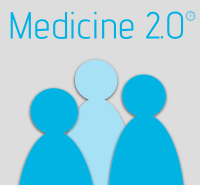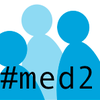Systematic Development of Two Innovative Web-Based Computer-Tailored Obesity Prevention Interventions
|
If you are the presenter of this abstract (or if you cite this abstract in a talk or on a poster), please show the QR code in your slide or poster (QR code contains this URL). |
Abstract
Background: Obesity is a major public health problem. Web-based computer-tailored interventions are considered to be a promising approach in the prevention of this health problem. These interventions, however, have difficulties to be attractive and effective for individuals with a low level of education.
Objective: To prevent obesity among adults, we developed a video-driven and a text-driven web-based computer-tailored intervention. The video-driven intervention was specifically developed to target individuals with a low level of education.
Methods: Both interventions were developed using the Intervention Mapping protocol and provide tailored health information via the internet based on an individual’s characteristics and answers to an online questionnaire. The interventions will be evaluated by means of a three-group randomized controlled trial using a waiting list control group. Measurements will take place at baseline and six and twelve months after baseline. Primary outcome measures are body mass index, physical activity, and dietary intake.
Results: Both interventions have exactly the same content and aim to prevent obesity by making small but sustained changes in dietary intake or physical activity. The interventions only differ in the format in which the information is delivered. One intervention is fully text-based, while the other intervention provides the core messages by means of videos. In these videos, the messages are read aloud by a professional actor. The video-driven intervention further consists of different narratives in which eighteen actors talk about their experiences with the program, aiming to give advice implicitly. The intervention consists of six sessions in which different determinants and processes derived from the I-Change Model and self-regulation theories are targeted. In the first two sessions, participants receive tailored feedback about their weight and behavior, after which they can set goals. For this purpose, individuals’ behavior will be compared with the corresponding standards. Subsequently, participants can make action plans by specifying ‘if then’ statements. After session two, they can start with the behavior change. In the remaining four sessions, participants will receive tailored feedback about their progress including feedback to help them deal with difficulties they may encounter.
Conclusions: The efficacy of web-based computer-tailored interventions may be increased by using videos as delivery format of health information, especially for individuals with a low level of education. The evaluation of the video-driven and text-driven intervention will provide more insight into this hypothesis and demonstrate whether or not video tailoring is a feasible format in computer-tailored interventions.
Objective: To prevent obesity among adults, we developed a video-driven and a text-driven web-based computer-tailored intervention. The video-driven intervention was specifically developed to target individuals with a low level of education.
Methods: Both interventions were developed using the Intervention Mapping protocol and provide tailored health information via the internet based on an individual’s characteristics and answers to an online questionnaire. The interventions will be evaluated by means of a three-group randomized controlled trial using a waiting list control group. Measurements will take place at baseline and six and twelve months after baseline. Primary outcome measures are body mass index, physical activity, and dietary intake.
Results: Both interventions have exactly the same content and aim to prevent obesity by making small but sustained changes in dietary intake or physical activity. The interventions only differ in the format in which the information is delivered. One intervention is fully text-based, while the other intervention provides the core messages by means of videos. In these videos, the messages are read aloud by a professional actor. The video-driven intervention further consists of different narratives in which eighteen actors talk about their experiences with the program, aiming to give advice implicitly. The intervention consists of six sessions in which different determinants and processes derived from the I-Change Model and self-regulation theories are targeted. In the first two sessions, participants receive tailored feedback about their weight and behavior, after which they can set goals. For this purpose, individuals’ behavior will be compared with the corresponding standards. Subsequently, participants can make action plans by specifying ‘if then’ statements. After session two, they can start with the behavior change. In the remaining four sessions, participants will receive tailored feedback about their progress including feedback to help them deal with difficulties they may encounter.
Conclusions: The efficacy of web-based computer-tailored interventions may be increased by using videos as delivery format of health information, especially for individuals with a low level of education. The evaluation of the video-driven and text-driven intervention will provide more insight into this hypothesis and demonstrate whether or not video tailoring is a feasible format in computer-tailored interventions.
Medicine 2.0® is happy to support and promote other conferences and workshops in this area. Contact us to produce, disseminate and promote your conference or workshop under this label and in this event series. In addition, we are always looking for hosts of future World Congresses. Medicine 2.0® is a registered trademark of JMIR Publications Inc., the leading academic ehealth publisher.

This work is licensed under a Creative Commons Attribution 3.0 License.




